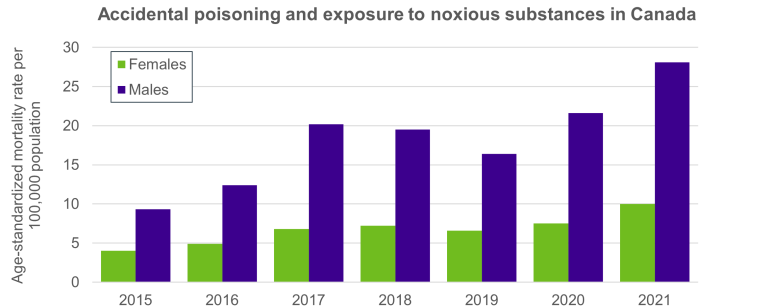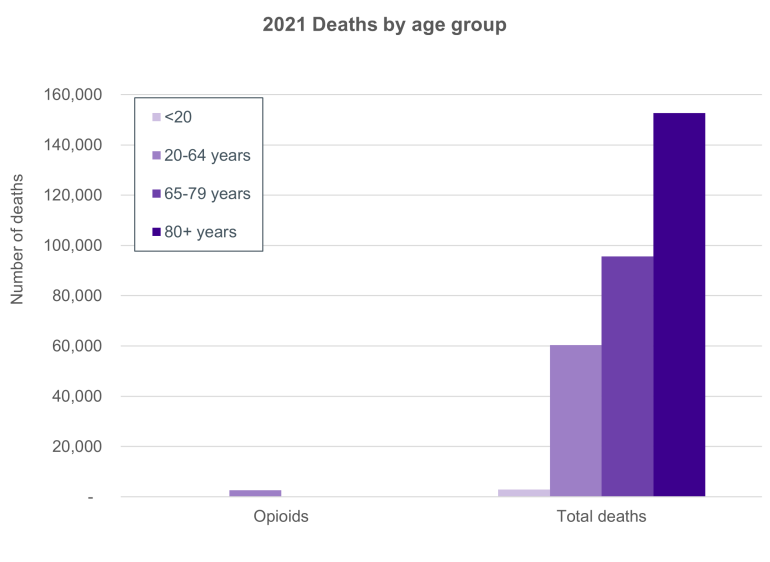Question:
What is going on with the opioid crisis in Canada? And will it affect the mortality of pensioner populations?
Answer:
The ongoing opioids crisis in Canada is a complex public health issue that has received a lot of attention by both the media and government officials. It is a growing epidemic, made worse by COVID-19, that has not affected Canadians uniformly, but rather has discriminated based on gender, location and age groups. The number of opioid related deaths is tragic, but is concentrated in working age people and still only contributes a small proportion of the total deaths in Canada; currently, the opioid crisis will not significantly affect the mortality of pensioner populations.
The chart below shows how the age-standardized mortality rate per 100,000 population in Canada has evolved over time for deaths categorized as “Accidental poisoning and exposure to noxious substances”, i.e., deaths that include accidental opioid related deaths. The chart depicts a general increase in rates for both men (purple bars) and women (green bars), with men generally experiencing rates more than twice as high as those for women.

While the chart above depicts a Canada wide view, provinces that experienced rates near or above the national level in 2021 are Saskatchewan, Alberta, Northwest Territories, British Columbia and Ontario (listed from largest to smallest age-standardized rate for men in 2021). While the data for the above table is only available until 2021, other data made available by The Public Health Agency of Canada draws a similar portrait for 2023.
The chart below shows the number of 2021 deaths by age group, with opioid related deaths on the left and all deaths on the right. It reveals that opioid related deaths are mainly focused in the working age group (ages 20-64), and that opioid related deaths represent a small proportion of total deaths in Canada (<0.5%).

Key takeaways
- The crisis disproportionately affects men.
- Certain provinces, generally western provinces, are more affected by the opioids crisis than others.
- The crisis primarily affects 20 to 64-year-olds (those in working age), implying that it has little to no effect on defined benefit (DB) annuitants.
- Although a major public health concern that must be addressed, opioids related deaths represent less than 0.5% of total deaths in Canada.
The key questions are:
- How will the opioids crisis continue to evolve?
- Will this epidemic spread to different age groups?
- What role can plan sponsors and insurers play in addressing the opioids crisis?




